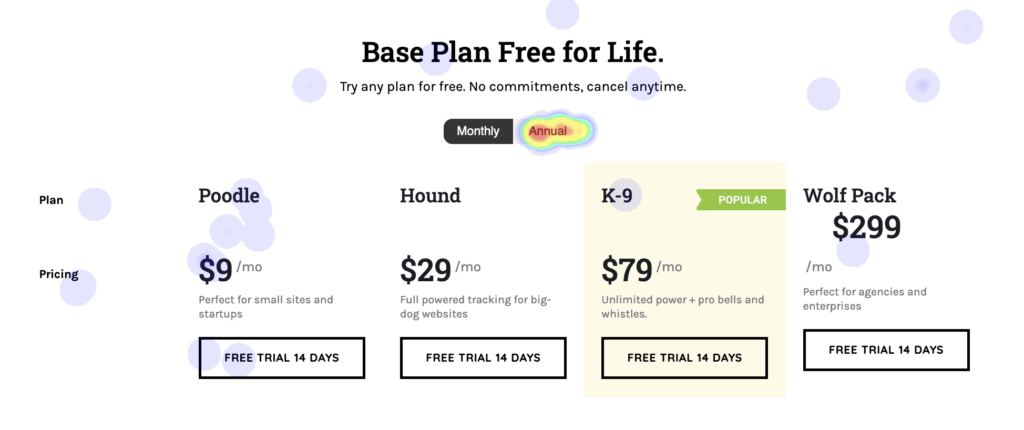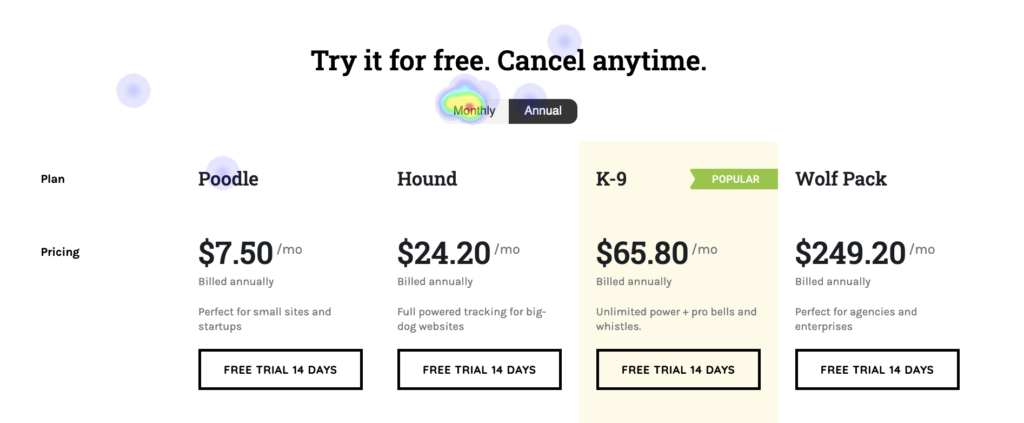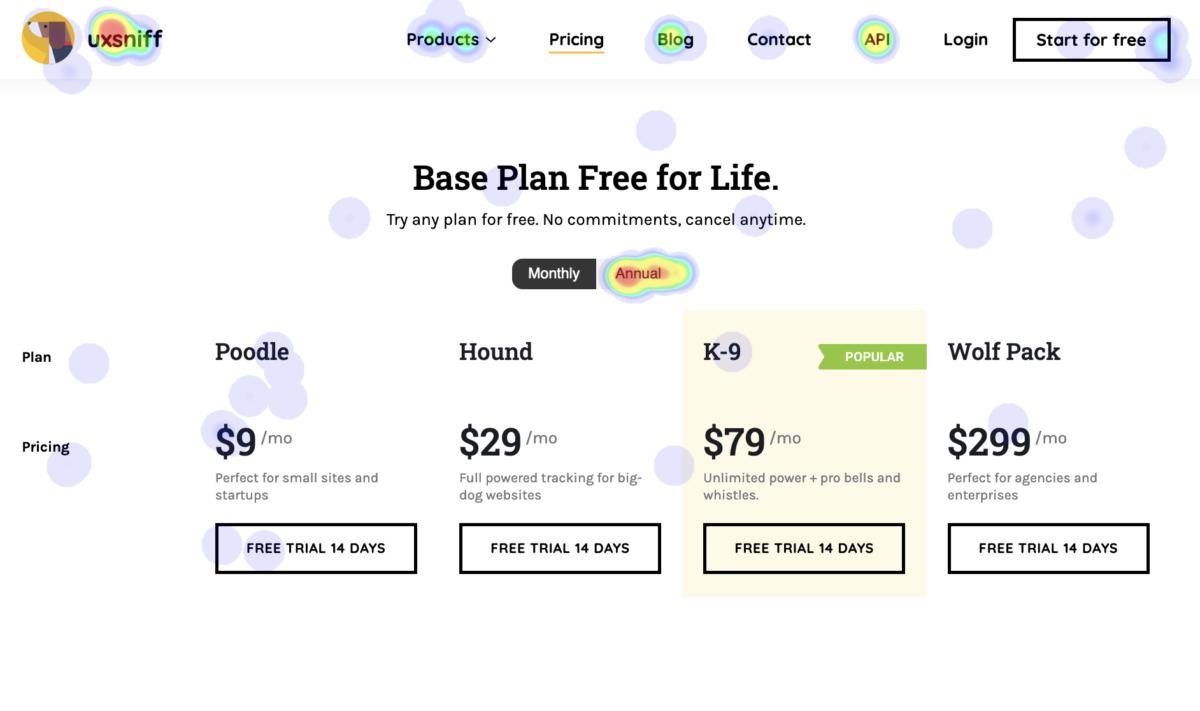The Great Pricing Experiment
Hey there, fellow data detectives! Ever wondered if your website’s pricing model is playing a little game of cat and mouse with your users? Well, buckle up, because we’ve got some juicy insights that might just turn your pricing strategy on its head!
It’s Not What You Show, It’s What You Hide
We dove deep into the behavior of customers on a few different client websites, switching up their pricing models from monthly to annual and back again. And guess what? We uncovered a hilarious truth: it’s not really about whether the price is for a month or a year. Nope, our curious customers are more intrigued by what they think they’re not seeing. It’s like a pricing model masquerade!

Picture this: a website flaunting its monthly subscription. But what’s that? A sneaky annual plan lurking in the shadows? That’s where the magic happens. Users start clicking on what they think they’re missing out on. It’s like a secret pricing party, and everyone’s invited.
The Switcheroo: A Tale of Two Models
Now, let’s turn the tables. We shine the spotlight on the annual plan, and what do our playful users do? They chase after the monthly option like it’s a golden ticket. Our screenshots don’t lie – users love chasing the option that plays hard to get.

What We Discovered: Users Outsmarting the Default
Here’s our insightful takeaway: it’s not merely a choice between monthly or annual plans. Users are savvy; they know that the default pricing option highlighted is often what’s most profitable for the business, not necessarily what benefits them the most. This awareness drives them to explore beyond what’s presented at face value. They aren’t just passively selecting a plan; they’re actively investigating, determined not to be outsmarted by the default settings. It’s a game of strategy and insight, with users keen on ensuring they get the best deal for their needs.
The Universal Pricing Dance
And here’s the twist: it’s not just us! We connected with other clients in the SaaS and startup sphere who experimented with the same pricing strategy. Guess what? They observed the same patterns. Users on these platforms also engaged in this intriguing game, seeking out the ‘hidden’ pricing options. It’s as if there’s an unspoken rule in the world of SaaS subscriptions, and everyone’s tuned into it. Turns out, this pricing dance might just be a universal rhythm in the tech startup world!


Tailoring Your Approach: A Diverse Pricing Landscape
In crafting your conclusion, remember that every business caters to a unique audience with distinct needs, and this should reflect in your pricing models. Consider businesses that strategically encourage annual sign-ups by offering substantial discounts. They understand their tool’s sporadic usage pattern and thus highlight annual plans, betting on their user’s occasional needs. Conversely, for services charging on metered usage, discount options are limited. Here, the push for annual plans is more about reducing churn than offering big savings. Recognizing these nuances is key. Your pricing strategy should not just aim to maximize immediate profits, but also align with the specific usage patterns and value perceptions of your audience. It’s a delicate balance between business needs and user expectations, where understanding and respecting your user’s intelligence becomes pivotal.
